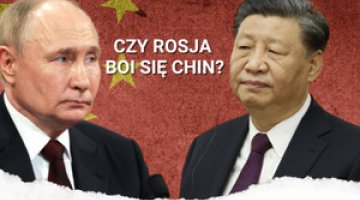Armenia: a power struggle between the throne and the altar, with Russia in the shadows
On 25 June, Armenia’s Investigative Committee announced it had uncovered a plot to overthrow Prime Minister Nikol Pashinyan and seize power by force. More than a dozen individuals were arrested, including opposition politicians affiliated with the so-called Karabakh clan, which governed the country from 1998 to 2018, as well as two senior hierarchs of the Armenian Apostolic Church (AAC): Archbishops Bagrat Galstanyan and Mikael Ajapahyan. The conspirators allegedly planned to incite unrest and had amassed a significant cache of weapons. Ajapahyan’s arrest on 27 June led to scuffles between police and members of the Armenian clergy at the Catholicosate headquarters in Etchmiadzin. A few days earlier, Russian-Armenian oligarch Samvel Karapetyan had been arrested on charges of publicly calling for coup in Armenia. He had defended the AAC’s authority, hinting at the possibility of an overthrow. To date, there have been no significant public demonstrations in support of those arrested.
The alleged plot and subsequent arrests are part of an escalating internal power struggle ahead of the parliamentary elections scheduled for June 2026. Groups hostile to Pashinyan enjoy near-overt support from Moscow, which has criticised him for suspending Armenia’s participation in post-Soviet integration frameworks and for pursuing closer ties with the West. In the coming months, the Kremlin is likely to encourage further actions against Pashinyan. Its preferred outcome is Pashinyan’s removal from office; failing that, it is seeking to sow instability and disorder in Armenia.
Commentary
-
For several years now, Prime Minister Pashinyan has been in sharp conflict with parts of the AAC hierarchy, led by Catholicos Karekin II. Following Armenia’s defeat in the Second Karabakh War (autumn 2020), the loss of Armenian control over the remnants of the Karabakh quasi-state (autumn 2023) and the handover of four villages in north-eastern Armenia to Azerbaijan (which legally belonged to the latter; spring 2024), these clerics repeatedly called on Pashinyan to resign. They accused him of betraying the national interest, showing excessive deference to Azerbaijan and dismantling the country’s alliance with Russia in what they described as a ‘suicidal’ manner. In May 2024, Archbishop Bagrat attempted to overthrow Pashinyan by organising a march on Yerevan, followed by mass protests in the capital (see ‘The archbishop’s revolt: the culmination of anti-government protests in Armenia’). In spring 2025, Pashinyan and his inner circle launched a campaign to remove Karekin II from his leadership of the AAC, accusing him of moral scandals and financial misconduct. Like many other hierarchs, the Catholicos has strong ties to Russia: his brother, Archbishop Yezras, heads the AAC eparchy covering most of Russia as well as Belarus, Moldova, and the Central Asian states.
-
Pashinyan has faced criticism from the opposition’s most hardline segments for seeking a settlement with Azerbaijan and Turkey. In June, he paid an official visit to Istanbul as part of his efforts to normalise relations with neighbouring countries (see ‘Pashinyan’s historic visit to Turkey – a growing urgency for normalisation’). Russia has been wary of these moves, as it seeks to position itself as the lead actor in any normalisation processes. A lasting peace between Armenia and Azerbaijan would weaken Russia’s regional influence in favour of Turkey. However, these initiatives are backed by the majority of Armenian society, which is weary after more than three decades of conflict. Despite declining poll numbers, Pashinyan remains the most popular politician in the country, with an estimated 20% support, while his opponents have likewise been losing ground. His Civil Contract party retains a realistic chance of winning the next election. Signing an agreement with Azerbaijan would provide the ruling party with a major political asset.
-
Russia will continue its efforts to destabilise the situation in Armenia. Potential tools at its disposal include its influence within the AAC and the assets of Samvel Karapetyan, who controls Armenia’s energy infrastructure; his fortune is estimated at over $3 billion. It is also possible that Russia was behind recent difficulties encountered by Armenian alcohol exporters, following Georgia’s temporary suspension of transit for these products. Armenia has been disengaging from post-Soviet integration frameworks by declining to participate in initiatives under the Eurasian Economic Union and the Collective Security Treaty Organization; however, it has refrained from overtly hostile gestures towards Russia. In May, Armenia hosted Russian Foreign Minister Sergey Lavrov and Pashinyan attended Victory Day celebrations in Moscow. At the same time, the Armenian leader has taken a number of steps designed to bring Armenia closer to the West. The most recent of these was the visit of the EU High Representative for Foreign Affairs and Security Policy, Kaja Kallas, on 29–30 June. She announced in Yerevan that the EU would provide financial assistance totalling $270 million through 2027 to support Armenia’s stability and economic development. She also stated that the EU had accepted Armenia’s proposal for an action plan on visa liberalisation for Armenian citizens.





